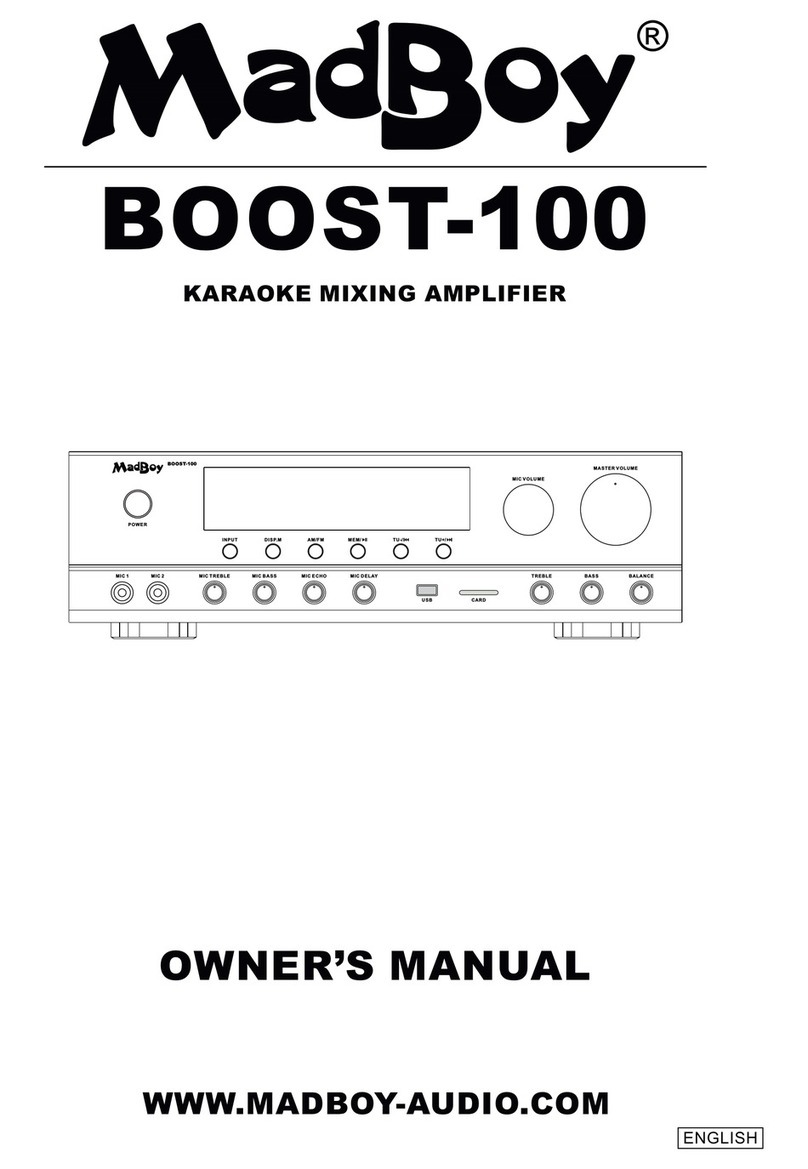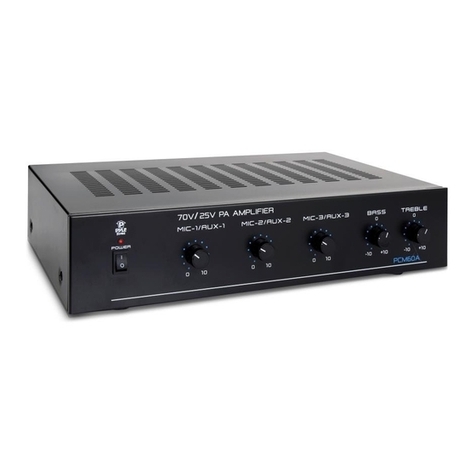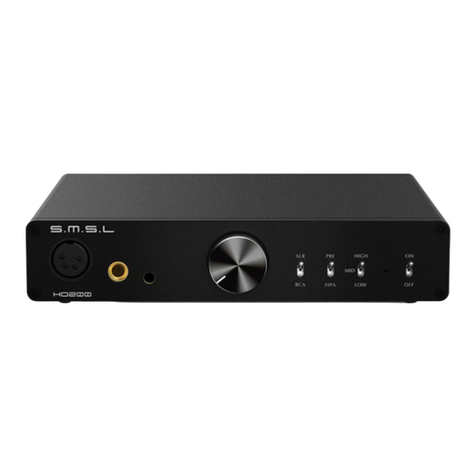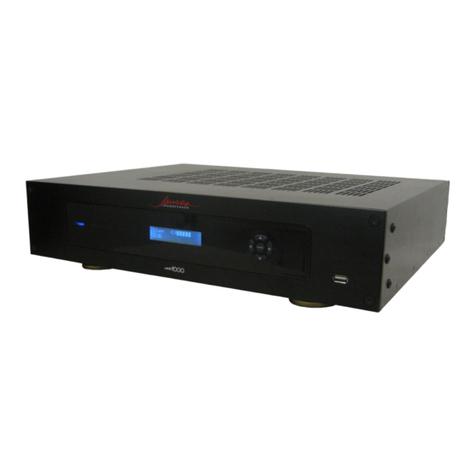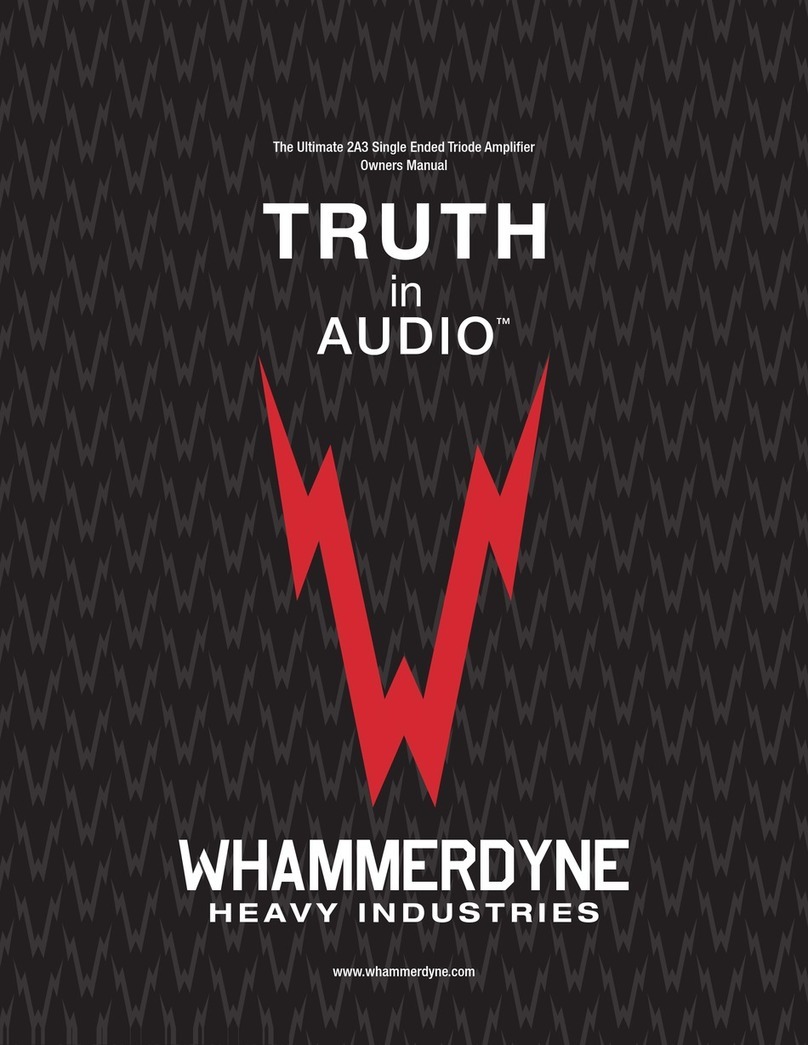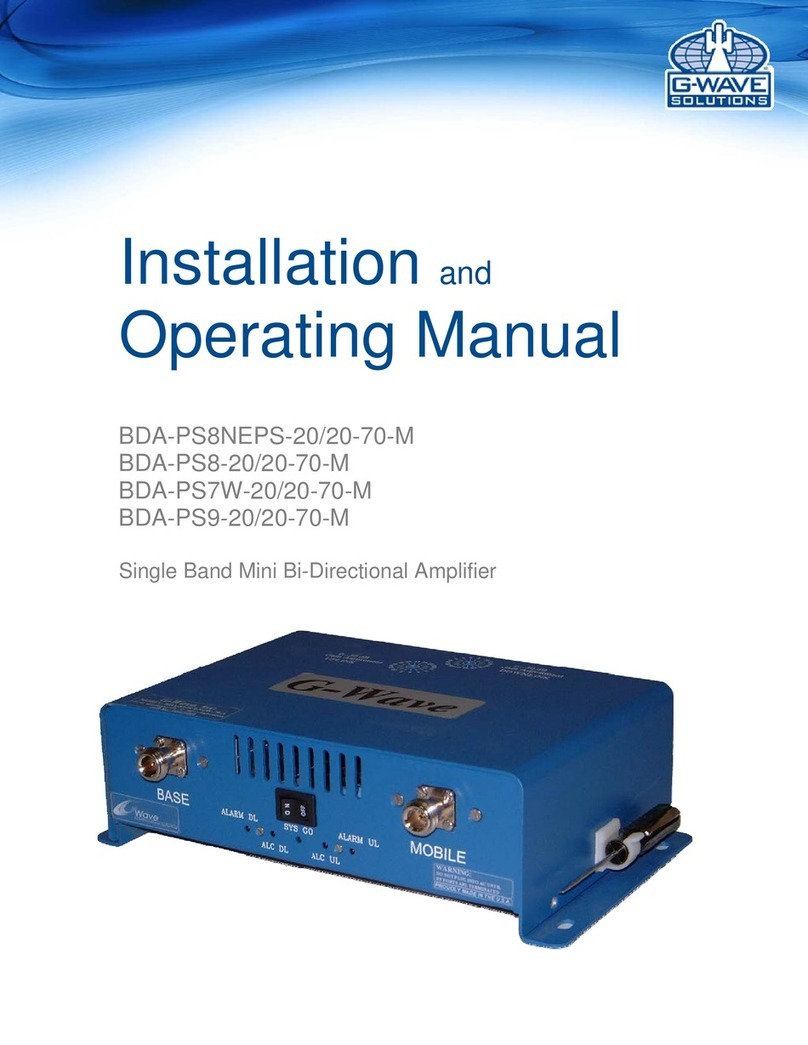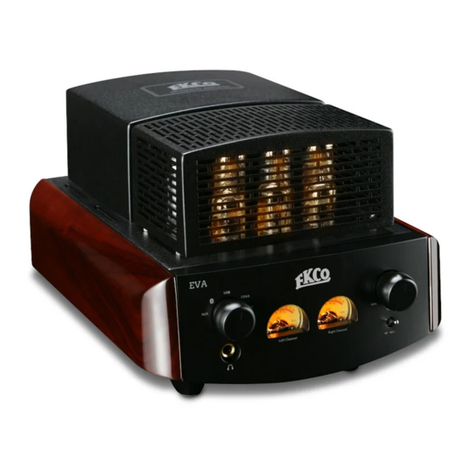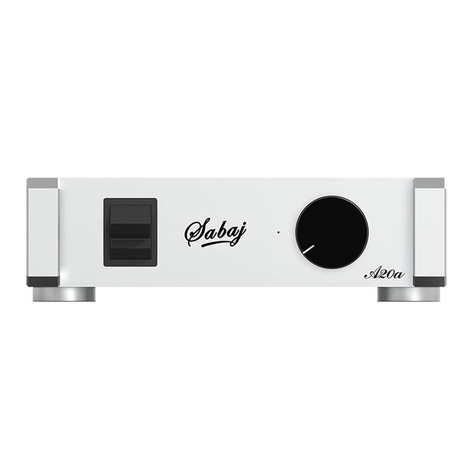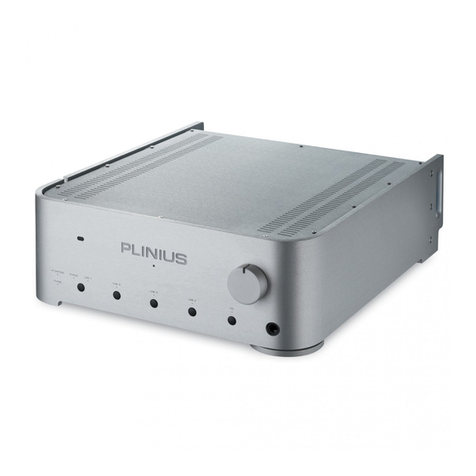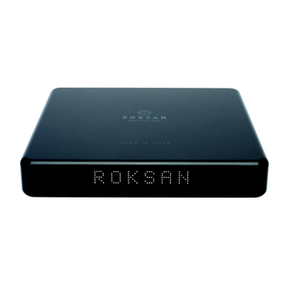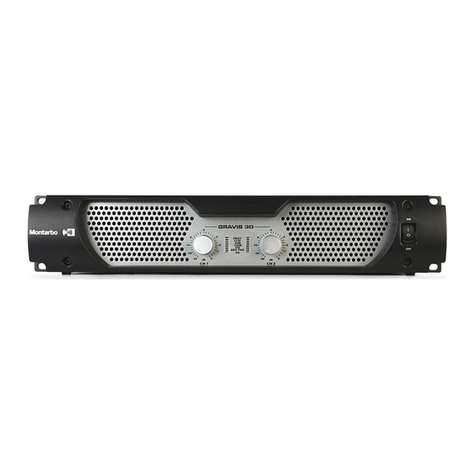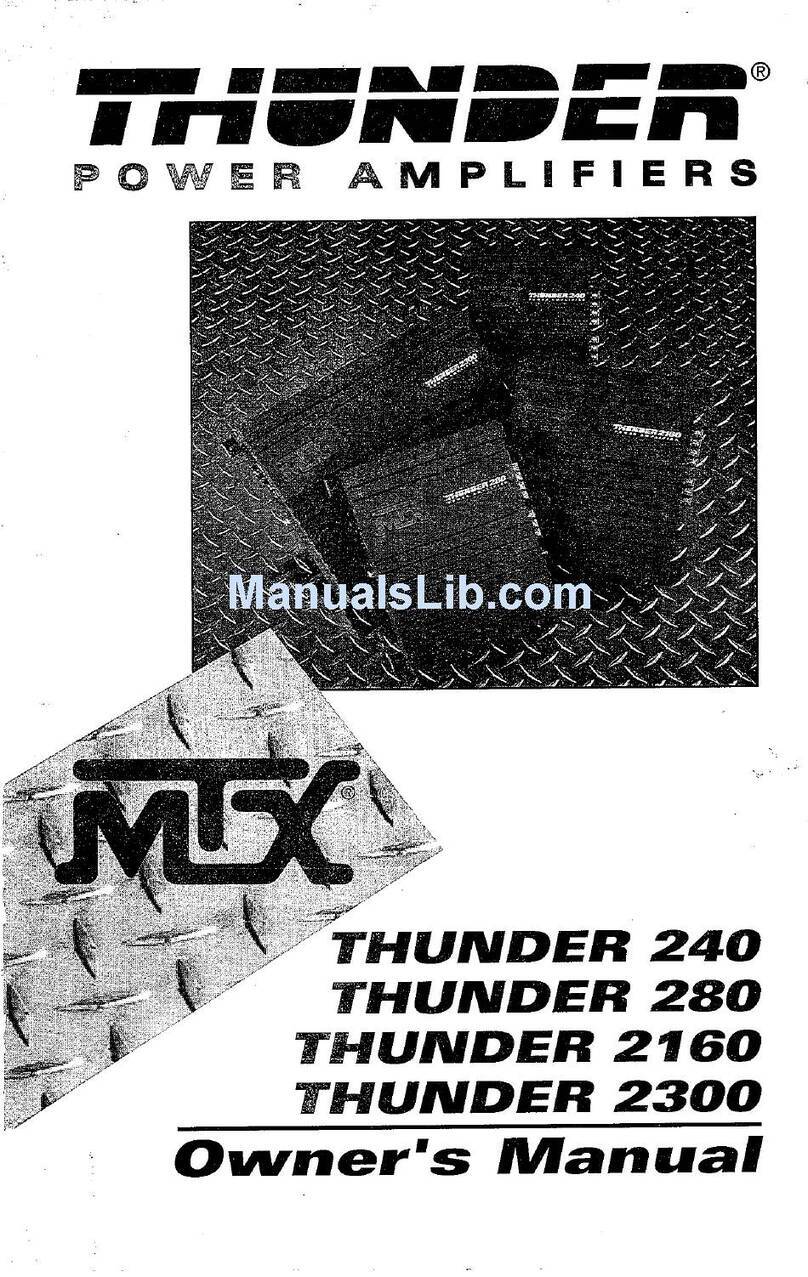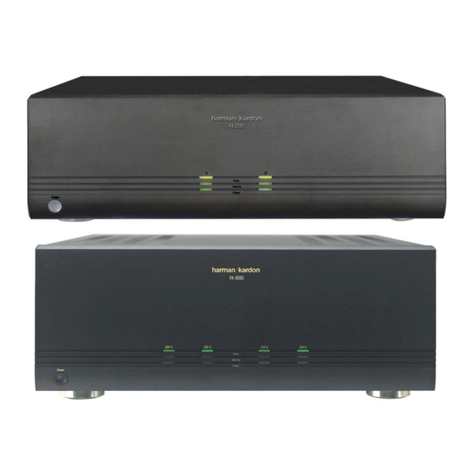Sinclair Project 80 Manual

I
=llnEl=lr
PROJECT
80
Constructional
and
technical
information
onSinclair
project
80
modular
hig
h-f
idelityamplif
iersystem.
;
tl

Contents
lntroduction
Section
numbering
Modulesavailable
Part
1:CompleteSystems
AB 25w stereoamplifierusingPZ6
and2Z40s
AB1 Lavout
AB2 Shopping
listandsuppliers
AB3 Notes
AC A stereorecordplayer
with tuner PZS
plus
2 Z40s
AC1 Lavout
AC2 Shopping
list
AC3 Notes
AD A tuner
for usewith AB
AD1 Layout
AD2 Shopping
list
and
suppliers
AD3 Notes
A1.4 Templates
Choiceofcabinet
Positioningof modulesand
wiring
Preampand
AFU,
tunerand
decoder
Poweramplifier
Earth
point
Powersupply
A3.5 Mains
wiring
Output
wiring
Input
wiring
Useof othermodules
240/260
PZs/PZ6
PZ8
Project
60
tc12
Other
modules
Alterationsandadditions
to basiclayouts
Plugsandsockets
Headphonesocket
Power-onindicator
Faultfinding
Part
ll:TheIndividual
Modules
AJ.O
43.7
A4
44.1
A4.2
44.3
A.4.4
44.5
44.6
A5
A5.1
t\3.2
A5.3
Ab
B
B6
86.1
8,6.2
86.3
B9
89.1
BA
BA1
t5t\z
B43
B44
BA5
B46
B47
8A7.1 Connections
8A7.2 Typesof aerial
BA8 Tuning
indicator
Project 805
Layout
Partslist
Notes
Additional informationon systems
Mountingdetails
Preamp,tuner,
AFU and
decoder
240,260 and PZ8
PZ5 and PZG
Tuner
andDecoder
Powersupply
Decoupling
Highvoltages
Lowvoltages
Applications
Use
with amplifiers
otherthan Project80
Tuner
Circuit
description
Circuit
diagram
Component
layout
Performance
Connections
SeeSection
BO
Aerials
Switched
tuning
andfine
tuner
Common
faults
Decoder
Circuit
description
Circuit
diagram
Component
layout
Performance
Connections
SeeSection
86
Tuners
other
than P80
Tape
recordlng
Common
faults
Alignment
Control
Modules
Stereo
80andAFU
Stereo
80
Circuitdescription
Circuit
diagram
Layout
Performance
Connections
Power
supply
AFU
Description
Circuit
Layout
Specification
Connections
Powersupply
Over-rideswitch
Usewith amplifiersother
than Project80
Common
faults
Z.40andZ60
Connections
Power,output,
speakersand
heatsinks
Output
power
Sound
level
Loudspeakers
Heatsinking
Powersuppliers
Gain
Common
faults
Z.40
Description
Circuit
Layout
Performance
Applications
Amplifier
for crystal
pickup
260
Description
Circuit
Layout
Performance
Switch-on-surge
suppression
Applications
Fullbridgecircuit
for60w
DCamplifier
Powersupplies
Performance
PZSA PZ6
AE
AE1
AT,Z
AtrJ
A
A1
41.1
A1.2
A1.3
4
A
A
A
4
+
6
A
5
o
6
6
6
6
6
U
8
I
I
9
9
31
q
10
9
9
I
9
v
9
q
10
10
10
10
10
10
10
11
11
11
11
11
13
13
13
13
13
13
13
13
13
'13
13
14
14
14
14
14
14
14
15
15
t5
15
15
t3
tb
16
16
16
16
16
17
17
11
17
17
17
'18
1A
11
18
19
tv
19
19
'19
IY
lv
19
20
20
20
20
21
21
zl
LI
21
21
22
z5
22
23
zq
24
24
24
ZJ
t4
.A
aA
zc
26
zo
lo
2t
27
a1
27
28
28
28
BA9
BAlO
BB
BB1
B82
B83
B84
BB5
B86
B87
B88
B89
BB1O
c
cA1
CM
C43
c44
LA5
c46
CB1
C82
C84
CB5
c86
c87
CBB
cB10
D
D5
D6
D6.1
uo.z
D6.3
D6.4
D6.5
D]
D10
DA
DAl
DA2
D43
D44
DA9
DA9.1
DB
DB1
DB.2
D83
D84
D88
D89
D89.2
DB9.4
E
E4
EA&EB
tAl
EB1
cru
EB2
trAJ
E83
EAlEB5
EAlE85.1
Description
Circuit
Layout
Connections
PZ5l6
Mainsconnections
A3
43.1
A5.Z
AJ.J
A3.4
P25
PZ6
PZ5
PZ6
P25
P26

EAIEB5.1.1 Fuseandswitch
EA/E85.1.2 110v
operation
EA/E85.2 Output
EAIEB10 CommonfaultsPZS
and
PZ6
EC PZg
EC1 Description
EC2 Circuit
EC3 Layout
ZI
27
21
28
28
29
29
EC4
EC5
trLO
F
FA
FAI
F43
Performance
Connections
Voltageadjustment
Otherparts
Project
805
masterlink
Description
LayouI
Appendix
Service
and
Guarantee
Modulesin groups
B C & D areintendedto work from a power
supply
of groupEor from anyother sourceof voltagesbetween
25
and35
(some
modulesdownto 12v
andsome
upto 55volts).
The
power supplyshould
be chosenin conjunction
with the power
amplifiers:itwill
also
drivewhatever
preamp
modules
youchoose.
BSignalsources
BA FM (VHF)
Tuner
intended
to receiveFM transmissions,88MHz
to 108MHz.
BB Decoder
intended
to be usedin conjunction
with the tuner to
convert
itto stereo
receotron.
Thesetwo modulescouldbe
installed
{with
a PZS)to work with an
amplifierotherthenaproject
80.
It isalso
possible
to usethe decoder
with tunersother than the
proiect
80tunerto convertthemto stereo.
CPreampsandcontrolsystems
CA Project80 Preamplifier.A stereopreamp,/control
unit. lt is the
heartof anyamplifiermadefrom project
80modules.
CBActiveFilterUnit
(AFU).
An optionaladditionto extendthe basic
facilities
of the project 80. lt is intendedto improve performance
where
oldrecords
areused,or
when cl'reaperturntablesare
used.
CCSO Decoder.For
quadraphonic
soundan SO decoder,
two more
powerampsand possibly
a second
power supplyareadded
to the
existingstereounit.Thedecoderalso
hasits own tone and volume
controls
for the rearchannel.The decoderiscoveredby a separate
manuat.
DPower
amplifiers
DB 260for allsystems
up to25W (8 ) or 40W with 4 . For higher
powers
(up
to 50W into 15 or80W into
8 )two 260'scan be used
back-to-back.Thefulladvantageof a260overthe 240 canonly be
realisedwhen usingPZ8to power
thesystem.
DA 240
for allsystemsup
to 18WRMS into4Qspeakers.
EPowersupplies
EA PZssuitable
for smaller
domesticsituationof 5 + 5W stereoor
10Wmono.
EBPZOa higher
powered
versionfor upto 25W totaloutput (12W +
12W
into8O).
240'swill normallybe usedwith PZ5
or P76.Although 260'scan
be
used,thereis no advantageunlessa PZ8
ischosen.
PZ5
andPZ6
are
both mainsoperatedand
\220-240
volts)
andcanbe adaptedfor
110-120vooeration.
ECPZ8
a highpowered
voltagestabilizer
with sophisticated
protec-
tion circuitry
built in, and performance
tailoredto match two 260's
working intoBQ,delivery
25 + 25V1
.The PZ8canalso
power other
combinations
butthe totalaudiooutputs
from it will be limitedto
about50W (e.g.
50W on mono,or25 + 25W stereo,or 4 x 12Yz\N
on
quadraphonic).
The PZ8isnot mains
powered
andrequiresaseparate
transformer
ratedat 40V,2A.
FOtherparts
FA Masterlink
a connectingpanelwith output and input sockets
fitted.
FC
Switchmodulecontaininga mainsswitchandneonindicator.
Thesetwo modulesare included
in the Project805 which also
containsthe Project80 Preamplifier2 240's and PZ5 with ready
tagged
wiresto allow
solderlessassembly.
Project
805is coveredin
lavoutEA.
29
29
2q
30
30
30
30
30
30
Apology
We regret that, due to circumstances beyond our control, the layout
and design of this first edition of the Project 80 manual has been
rushed. We apologise for any resulting errors and inconsistencies
but if you have any comments, criticisms
or suggestionsthe author
will be pleased to consider these when the next edition is reprinted.
Introduction
ThismanualdescribesProject
80highfidelitymodulesfor the home
constructor.Part One dealswith some complete projects
for the
home constructor and gives a pictorial layout of each, with a
shoppinglistand details
of some suppliers.LayoutAE dealswith
Project805
specif
ically.
Thebeginneris
stronglyrecommended
to followone
or otherof
these projects
exactly, but the rest of Part One gives additional
information
on completesystems
and hintsfor those who wish to
depart
fromthesuggestedlayouts.
It is not possible
to list all the pitfallsthat can occur but if
commonsense
is
usedandthehints
are
followed,
eventhecomplete
beginnerwill be ableto assemblehis project
into whatevercaseor
system
hewishes
- andhewill
get
excellentresultsfirst
time.
When wiringthe modules,
you mayfind it helpfulto colourthe
wires
on our layouts.Forinstance,
you could
colourall
the wires
connectedto the power supply + ve in red and say to the -ve in
green.
There
willthenbefarlesschance
of a mistake
whenwiring.
Section46 is
about
faultfinding
- just in case
you do make
a
mistakein assembly,or something
goes wrong. lt includes
a
step-by-step
chartwhichwillhelp
youfind mostlikelyfaults.
Part Two of the manual dealswith the individualmodules,
unit-by-unit.lt gives
circuitdiagrams,
performance
and technical
information,
as
well
as listingmany interesting
and usefulapplica-
tionsfortheindividualmodules.
Section numbering
By its very nature, a modular system is flexible - new modules
are
announced
fromtimeto time.
Thismanualistherefore
planned
sothat thereisa logical
place
for informationon new modules.The
manual
isalsolaidout so that as
far as
possible
it isinthe order
you
want it - the first thing you will want is to assemble
your new
system - so the practical projects come first. Only if you are
departing
from oneof thesewill you needthe rest
of Part
One
(with
theexceptionofSection
A1whichdeals
withmountingthemodules).
PartTwo isnumberedasconsistently
as
possible
sothat Sections
BA2,BB2,CA2,etc.are
allcircuitdiagrams,
whilstB86,CB6,
DB6
are all information on power supply requirements.Where two
moduleshavecommon
information,e.g.tunerand
decoder,which
have
identical
power
supplyrequirements,ratherthan include
this
information
twice as 846 and B86, it is includedas Section 86
thereareno Sections
8,46or B86.
240and
260havemuchcommoninformationincluded
in Sections
D5, D6, D7 and D10.The power supplies
PZ5and PZ6 are very
similar
so that common inforrnationon theseis included
as EAr'EB
whenitdoes
not includethe PZ8.
Modules Available
The following list shows all the modules which are available,or
projected,
at
the
timeof printing.
Themodulesare
grouped
intofour
sectionslettered
to coincidewith Part ll of the manual:B signal
sources,C preamps
and controlunits,D power amplifiersE power
supplies
and
F
othermodules.

AB 1 PZ6/Z40layout
Part1: Complete
Systems
AB 25w
stereo
amplifier
usingPZG
Shopping
list
Z.40
Project80Preamplifier
AFU
(optional)
PZ6
lor PZ5)
Cabinet,
metal,19" x6" x2" approx
3 5
pin
180"
(A
type)
DIN
socketsand
plugs
2 2pin DINspeakersocketsand
plugs
1 2 pole
mains
switch(toggle
type)
1 Miniature
panel
mountingfuseholder
1 Cable
clamp
(for
mainscable)
2 Heatsink
blocks
(for
240mounting)
1 Resistor
(120Olw)
fortuner+ vefeed
(PZ6
onlv)
(see
nore2)
22 684 x %
" screws
(see
note1
)
18 6BAnuts
1 6BA %
" screw
(for
earth
point)
6 684 soldertags
1
yd stereomicrophonecable
1
yd stereomicrophonecable
3vds
assortedcolours
flexible
wire
as
required:
3 core
mains
cable
Suitablecabinets
areavailable
from:H L
Smith
& Company
278EdgwareRoad
LondonW2
(Plain
aluminiumchassis,undrilled)NSMHCSalesLimited
(National
SocietyforMentally
Handicapped
Children)
17
PembrokeSouare
LondonW24EP
(Aluminium
chassiswithslide-onwoodsurround)
West HydeDevelopments
Limited
RyefieldCrescent
NorthwoodHill
Middlesex
H46 1NN
(Black
cabinet
with wooden
endpanelspunched
readyfor various
combinationsof modules)
West Hyde
canalsosupplyall
hardware,
etc.,to suittheircabinets
or
your
localshopshouldbeabletosupplyalltherequireditems.
AB3 Notes
l. The Z40s
are
mountedon heatsink
blocksas shown in
41.2. The nuts and bolts indicated
aboveassumethat
block has 684 tapped holes - if you use nut and
fasteningfor the blocks
you will need8 less
%" screws
fourextral" screws
and
nuts
lfor%" block).
2. The box is wired so that the complementarytuner (Section
AD) plugs
into the tuner socketand draws power from the
amplifier,thereforethere
is
a connection
from PZ6 + ve to Pin
4 on thetuner
socketto provide
h.t.Thiswire
shouldonly
be
fitted
ifatuner
is
to beused.
Theresistorshowninthis + vefeedlineisnot reouired
when
a PZ5isused.
3. Usinga PZ5instead
of the PZ6will reducethe output power
(see
section E4)but will have littleother effect except for a
slightincreaseinhumlevelwhenusingthetuner,/decoder.
AC A stereorecord
player
(and
tuner)usingPZs
AC 2 Shopping list
2 Z.40
1 Project80 Preamplifier
1 Project80tuner {
1 Project80 decoder1optional
1 PZs
1 Plinthwith deck
1 100
pF25V
capacitor
(for
tunerand
decoder)
1 5 pinDIN
socket
2 2 pinDINspeakersocket
1 Coax
aerialsocket
1 Panel
mountingfuseholder
1 double
pole
mainsswitch
1 metre stereo
microphonecable
3 metres assortedcolours
flexiblewire
AB2
2Iia
the
bolt
ano

PZS/240
plinth lavout
3 metres mains
cable
aluminiumfoilfor lining
68A 1/q"
Screws
68,4 1" screws
68A Yr" spacers
684 nuts
6BAsolder
tags
A
5
4
18
6
AC3 Notes
1. The
plinth
we usein this
exampleis
the BSRMcDonald
Ap1,
suitablefor HT70,MP60
and
610
decks.lt measures
405
x 370x
88mmapprox.When choosing
analternative
plinthmake
sure
itisthe
samesize.
2. Inorderto minimisehum,
the inside
of the plinth.
where
the
preamplifier,
tuner
anddecoder
fit, shouldbe lined
with metal

foil. Aluminium cooking foil is very suitable.Use a contact
adhesiveto glue
a layer
inside
the cabinetbefore
drilling.After
drilling remove any burred foil to prevent short circuits. A
soldertagshould
be
placed
underoneofthe screwsusedto fix
the preamplifier
and a wire run from this screw to the earth
point.
Thistagwillthenearththefoil,reducinghum.Makesure
the foilcannottouch onto anyof the connectionsor modules:
PVC
tapecanbe usedasan insulateranywhere
thisispossible
- especiallyaroundthe connectionsto the 240 (and to the
masterlink
in
project
AE).
Itis
alsoagoodidea
to glue
anareaof foilunderneaththe240's
earth
point
and
wiring.lfthisisdoneit will effectivelyearththe
240
heatsinksto theearth
point
andthe wireshown connected
to these
heatsinks
canbeomitted.
The PZ6
or Bare not advised
for plinth mounting because
of
difficulties
of heatsinking
(see
section
D6.3).
AD Astereotuner
(for
use
withAB)
AD I Tuner
layout
AD2 Shopping
list
P80tuner
P80decoder
chassis
1000pF
25V capacitor
(see
notes)
coaxaerial
socket
5 pinDINsocket
T5Qcoaxcable
stereo
microphonecable
assortedcolours
flexiblewire
68A %" screws
684 nuts
AD 3.1 DIN
plugwiring
Thetuner
boxcouldbeincreasedin sizeto containa built-in
PZ6
or5,thiswillrequire
a
f
use,
double
pole
switchetc.
When usingthetuner,
powered
from an amplifier
otherthan
that of sectionAB, hum could be a problem
evenwith the
1000pF
capacitor.lt may helpifthe negativeconnection
of the
tuneristakenvia
a separatewire
(perhaps
usingPin1 of the
socket)to theamplifier'smainearth
point.
A
AE2 Parts
List
Thefollowingcomponentsaresuppliedinthe Project
805
- identify
them allbeforestartingassembly:
Item Ouantity
Description
1 Masterlink
1 ProjectB0
preamplifier
1 PZ5
power
supply
2 240amplifiers
1 Mains
switchunit
with wires
Wires:
items6to 13
areall
packed
in
onebag
20cm
20cm
1metre
4
4
6)
7l
8)
q)
10)
11)
121
13)
141
16)
17\
Thesuppliers
listed
in
section
AB 2 cansupply
atunerboxto match
theiramolifier
box.
AD3 Notes
1
. Thetunertakesits
power
from the amplifier.The interconnect-
ingleadmust bewiredwith a through connectionon Pin4 to
provide
this
power.
Thediagramshowshow each
plug
isto be
connected
onthislead.
2. The 1000sFcapacitorshown shouldnot beneededifthe main
amplifier
irsesa PZ6
or otherstabilized
power supply.
6
5 Yellowwires150mm
long.Thesearefor signal
connectionbetween
tunerand decoder
(1
wire),
decoderand
preamplifier
(2wires),
preamplifier
andAFU (2
wires),if theseextra
unitsare
fitted.
3 Green
wires 150mmlong. These are for earth
connections,decoderto tuner,tuner
to preamp-
lifier
and
preamplifier
to
AFU.
1 Yellow
V-shapedwire, 380 + 150mmlong,for
decouplingconnectiorr
(E
onmasterlink)totuner
anddecoderoins
2.
AE Project
805
1)
zl
4l
FI
1 Green
harness
(6
wires,380mm
maximumlength,
joined
toeyetag)forearth
(-ve).
1 Redharness
(7
wires,430mm
max,
joined
to eye
tag)
for +vewiring
2 Yellowwires
(255mm
long)
(Pins
9onZ40sto A
I B
onmasterlink)
2 Violetwires
(220mm)(Pins
14I 15
on
preamp
to
oins5onZ40s)
1 Violet,/yellow/greentwisted,660mm,forpickup
connection,
masterlinkto Preamplifier.
1 Violet/yellow/green
twisted,460mm, for radio
connection,
masterlink
to Preamplifier.
1 Five
wirestwisted,460mm long, for tape con-
nections,masterlink
to preamplifier.
1 Fivewirestwisted,
355mm,with 2 phono plugs
and
100mm
pigtail,
for pickup
connection,
deck
to masterlink.
1 Grey3 corecablefor mainsconnection,2 metres
long.
Extrawires:items1
5to 17
areall
oacked
in
onebaq.

P805layout
Blacfi
d\
AE 1.7 Connection detail to Stereo B0
Hardware
18) 4 684spacers
4 684 %screws
4 6BAflat
washers
4 684
nuts
4 6BAshakeproofwashers formounting
Z4Os
1ql
'19) 3 68A
1\h"
nylonstudding I
3 68A
fibrewashers I
3 684nuts ( tor
mounting
3 684 shakeproof
washers I preamplifier
1 eachitemsas
19for
mountinq'switchunit
2 Anglebrackets r
8 684 %
" screws I
8 68,4nut ) for
mounting
201
211
221
zJl
8 684 nuts I masterlink
8 68,4
shakeoroofwashers
4 Self-tappingscrewslor PZ5 I for red
and
qreen
2 4BA%"screws I h.rn...J.
2 4BAnuts
turple (L)(M)
(a)
creen Jt
(S)Yellow
(R) PurPle
Red(J)
Letters
andnumbers
in
brackets
refer
to connectionsto masterlink.

@-i I
l- E
F
-r EI
nL
I
AE3.1
AE3Notes
1. The plinth
we usein this example
is the WBl for the SP25
Mark lll. You can useany similar
plinth,
includingthe plinth
used
inlayoutAC.Thediagramsaboveshowsuggested
posit-
ions
for theWB1 plinth
andtheAP1
plinth.
2. lt is
good practice
to linethe inside
of the plinth
with foilas
explained
lnAC3.2.Theareaaroundthe
masterlink
shouldalso
be
lined.
3. Wirelengthsin ourdrawing
have
been
'tidied
up' slightly
for
clarity.lt is,however,
important
that they areloose
- do not
twist or tape wires togetherunlesswe supply them twisted.
The
only
exceptionto thisisthatthe sparewires
on the red
harnesscanbetwisted
andtapedtogetherout of the
wayas
we
haveshown them, or if you prefer,you can cut these spare
wiresoff completely.
4. Deckconnections.
Thewireto connectto the deckhas
phono
plugs
and
push-on
connectorssincedifferentmakes
of decks
have different means of connecting.lf you use the phono
plugs,
thencutthe'pigtails'
whicharenotused
off.
lf you use
the push-fit
connectors,tape
thephonoplugs
up carefullyso
theycannottouchanything
insidethe
plinth.
AE3.7 Detailof break
in
p.u.trock
breaks
L
Mainsconnections.Thepush-fit
tagsfor the PZ5
(the
wires
are
already
connectedto theswitchunit)have
pigtails
to connect
to thedeckmainsconnections,sothat
theswitchunitoperates
deck
andamplifier.Connecttheseas instructedby the deck
manufacturer.lf you arenot usingthem cut them off com-
pletely.
Adding tuner,decoderand AFU can be done usingthe extra
wires
(items
15-17).
Connections
for theseextra
modules
are
asshown
inAB1 (AFU)
andAC1
(tuner
anddecoder).
Positive
supplywires
(to
pin
1)
arealready
includedattachedto thered
narness.
Ad
justments
Once
the project
isworking,the sensitivityof the tapeinput
may be adjusted by means of RV3 and RV4 (see FA3 for
positions)
to give
bestresults.
With some higher output magneticcartridgesthe links
shown
infig.
AE37maybebrokento give
improvedmatching.
A: Additionalinformation
on
systems.
A1 Mounting Instructions
Al .1.Preamps,
tuners
and controlmodules
Theseareallstyledinthe
sameway andthefixing
of allof themis
identical,bymeans
of 1,2
or 3 6BA screwswhich pass
throughthe
panel
to which
the moduleis
fixedandinto
the rear
of the module
itself.
Thepanel
maybeof metal,
wood or plastic
with verylittle
affect
ontheperformance,
althoughifawood or plastic
cabinetisuseditis
a
good
idea
to linetheinside
withfoil
asdescribedin
section
AC3.
Itisvitallyimportant,
when usingmetal,
to makesurethat nopart
of the rear
of the control
module
cantouch the metalandtherefore
sometype of insulatormust be put between
module
and metal.
YourlocalDIY
shopwillbeable
to sell
you
somevinyl
upholstery
materialabout1
or
2mm
thick
- thisisideal
as
you
can
glue
alayer
over
the metal
afterdrilling
andmakeholes
through it asnecessary
You canalsouse
anoff cut of formicaor other laminate,
glue
it on
beforedrillingand
usethetemplate
to drillthrough
both.
5.
6.

1
t
(
i
l
heatslnking
soisreally
onlysuitablewhen
usinga PZ5.
We use
this
methodwith Prolect
805.
Alternately
two 260's
canbemounted
on oneblock
(the
Z4Ois
a
littletoofatfor
this)
asshowninfig.DB
9.2.3.
A |.3
PZsandPZ6
These
modules
aremountedby means
of screws
through the base
of thecabinet
and
the holesin the bottom
of the power
supply.
ThePZ5
and6areveryheavy
items
soremember
(especially
if you
have
mounted
it
ontothe hardboard
base
of a record
player
plinth)
thatthe mounting
willbreakloose
if theamplifier
isdropped.
A 1.4
Templates
Page31
containstemplates
for
mounting
themodules.
A2 Choice of cabinet
Project
80 is very versatile
and can be built into many different
cabinets.Metal is the materialwhich causesleast
problems
but
wood or plastic
canbeused.
With wood (and
to a lesser
extent
with
plastic)
hum
canbea problem
if
careisnot
taken.Wood and
plastic
willnot
give
anyheatsinking.
The
modulesin
thismanual,in so
far
ascabinets
areconcerned,
canbe
grouped
into
three
sections:
Tuner
anddecoder
Preamo
andAFU
Power
amplifierandsupply
Three
separatecabinets
canbeusedfor
thethree
groups
with no
problem but do not separatewithin
the groups
- in particular
keep
thepower
supplyinthe boxwith the amplifiers.
The
tuneranddecoder
arenotcritical
ofmountingmaterials,
butif
metal is used a window must be cut to avoid upsetting
the
alignment.The
windowis
shown
in
thetemplate.
Itisa
good
idea,ifwood orplastic
is
usedforthetuner
or preamp
mounting,
to linetheinside
of the panel
with aluminiumfoil,which
should
beearthed
(see
sectionAC 3).This
earthedmetalwill help
reduce
hum.
The power amolifiersshould be mounted on metal for heat-
dissipation.
Seesections
43.2.
and
D6.3.
Severalcommerciallyavailablecabinets
areavailablefor project
80,addressesofsuppliersare
given
in
section
A82.In
particular
West
Hydemarket
threecases,ready
punched
for
combinationsof power
suppliesandamplifiers.
CaseA: front panel
for tuner,decoder,
stereo80 and AFU will
acceptPZB+ transformer,
or PZS/P26,
Z40sor Z60sand,/or
a project
805with masterlink.
A 7.1 Stereo
B0mounting
Thediagramshowshowa
preamplifier
ismounted,
notethemetal
chassisanda'card'of insulation.
Notealsothefibrewashers
used
between
thechassis
andthe stereo80 which stop bendingof the
modulewhen
thescrewsaretightened.Thescrewssuppliedhave
a
nuton themto allow
for differentthicknessesof panels.
A1.2. Z4O,2.60
and PZ8
All
thesemoduleshavethesamesortof mounting,bymeans
of two
holesintheedgeof a blackmetalfin.When the moduleis
working
hardthisfincan
get
veryhotandthemountingmustallowtheheat
to
get
away
fromthemodule,
sothe
mountingis
partially
mechanical
and
partially
for
heattransfer.Themetalontowhichthemountingis
madeconductsthe heataway thisis
called
heat
sinking.
The amountof heatsinkingneededis entirely
dependant
upon
what power
supply
you use,what speakers
you have
and at what
volumelevel
you
use
the
equipment.
For normal domestic
listening,
using PZS,
you will need no
heatsink.
In our layoutsfor the PZ6/240 and PZ8/260systemswe use a
metalblockto provide
firmmounting
and
good
thermal
conduction
throughto the metalcabinetwhichisthe heatsink.
Additionaldetails
of heatsinking
are
given
in
section
D6.3.
Thediagram
showshow
a260
canbemounted
ona heatsinkblock,
made
from 20mm (%") square
aluminiumbar.Also shown is a
method
of mounting
usingmetal
spacers
- thisdoesnot give
any
A |.2 240mounting
o
p-)
U
0
il

Case
B:front panel
for stereo80 A AFU only but will acceptother
combinationsascase
A.
CaseC:
front panel
fortuneranddecoder
only,
room for PZ1or PZ6.
West Hyde
can supplya transformerfor the PZ8andall
hardware
for theamplifiercases,
which
willbe ready
punched.
Holesindicated$shouldbe %" (3mm)
diameter.The largehole
on the switch unit shouldbe 7o" (6mm)
and allotherholes
*"
(5mm).
See
page
31fortemplates
A3 Positioning the modules
A3.1.Preampand AFU, tuner and decoder
The positioning
of thesewill naturallybedeterminedby the cabinet
whichischosen.
TheStereo
80isthe modulewhich ismostusedandisthe heartof
the systemso this will probably
be placed
centrally,
with the other
modulesaround
it.
(e.g.
tunerand
decoderto the left,AFU io the
right).
Remember
that the input wiresto thesemodulesaresensitiveto
inducedhum so do not place
them wherethesewireswill pass
near
to mainstransformerandwiring,orto turntablemotors,or nearthe
outputs of the 240/760.
In
our layouts
(AB A AC) we keepallmainswiring
in the back
right (or left)hand corner
well awayfrom the preamp.
43.2.Z|0 and
260
Thetwo power amplifiersshould
be positioned
closeto eachother
(two can evensharethe same heatsink
block as shown in section
D89.2.2.1.Keepthem away from the input sockets,wiring and
connectionsto the preamplif
ier,
to avoid
interaction.
A3.3.Earth
point
A point should be chosenmid-way betweenthe 240'sor 260'sto
whichall
earth
wiresarerun,separately.Positionthissothat
wires
to terminals1 and
2 (and
3 on 260)
of theamplifiersareno longer
than3". Separate
wires
are
alsorunto theearth
point
from:
power suppry
-ve
speakersockets
mainsearth
AFU earth
Preamplifier
earth
Do not 'double
up' on anyof thesewires.
Itis
usuallyconvenientto
form
this
point
fromseveralsoldertags,as
we have,which arescreweddown to the chassisfor support (and
to makeelectricalconnectionto the chassis).lt doesnothaveto be
screweddown but, if it isnot,aseparate
wire shouldbe connected
from it to the chassis
(or
metal
earthing
foil).
Notein layoutAC we haveruna separate
wire
to earththe metal
heat fins of the Z40s - this of course
is not necessary
if a metal
chassisis used since earthing
will then be done automatically
throughthe mounting.
A.3.4.Power supply
TheP25,6
or 8 will be mountednearto the Z40sor Z60ssothat the
positive
andnegativewiresarenotlongerthan
about
6". Thislength
islesscriticalwiththePZSandmorewiththe PZB.InourlayoutAC
thesewiresareabout 12" long,
which issatisfactorywith PZ5.
ThePZSor6willalsorequire
positioning
sothat the transformeris
kept
awayfrominputandotherwiring
(or
itcaninducehum)andso
that mainswiresandconnectionsareneatandtogether.
ThePZ8isnotsocritical
- the
transformercan
bemounted
some
distance
from the PZ8
(there
areno mains
connectionson the PZ8
itself
).
lfthe + ve
and
-ve
wiresfromthe power
supply
aretoo long it can
causedistortion.lf this occursthen a second
point can be chosen,
similarto theearth
ooint
butisolatedfromthe
chassis.
A 1
000uF50V
capacitor
shouldbeconnectedbetweenthisH.T.
point
and
theearth
point,
and all H.T.wiresarenow run to the H.T.
point
instead
of
directto the power supplywhich now connectsthrough a single,
ionger
wireto r v€ H.T.
point.
A3.5.Mainswires
Mainswiring is
potentially
dangerous.lt has
250V
present
and if by
accidentthisis
appliedanywhereotherthanthe correctterminalson
the power supplyit will be destructive.
MainsLive
(Brown)connects
direct
to the fuse:
the otherconnect-
ionof the fuse
goes
throughone pole
of the on,/offswitchto the L
10
connection
on the PZ5or 6 or to the 240 volt input on the PZ8
transformer.
MainsNeutral
connectsthrough
thesecond
pole
on the switchto N
on the PZ5,/6
or to Ov on the transformer
primary
of the PZ8.
Mains
earth
(green/yellow)
connectsdirect
to the main earth
point
in
the
amplifier.lf a turntable
or othermains
powered
itemis
to be
used,operatedbythesameswitchasthe Project
80,thenthe mains
wire
shouldbe
takenfrom L
and
N on thePZS/6via
a suitable
plug
and
socketif required.
to its
mains
connection.
ON NO
ACCOUNT
MUSTANY MAINS
CONNECTION
BEMADE
TO
ANY OTHERMODULE
Because
of the
high
voltage,and
the
possibility
of inducing
hum,
mainswiring is bestkeptwell away from the rest of the amplifier.
Caremustbetakenif
themainsswitchis
to bemountedon the front
of the amplifier.
seealsosectionA5.3.
43.6. Output wiring
From
pin
9onthe240
orZ60 the outputwirecorrnects
(via
a2000uF
capacitor
on the 260 only) to the output socket, and to any
headphone
sockets
you may havefitted.
lf any of this wiring is anywhere
nearthe input wiring of the
preamplifier,
orany
othermodules,interaction
canoccur
assomeof
the
outputsignalwill
then
feed
backto the input.
Keep
outputwell
awayfrom
the input
and
alsotwistthe outputearth
and live
leads
together.
A3.7.Inputwiring
Shouid
usuallybe
screened
- but if it is
short
(4" or so)
anddoes
not
pass
near
any
mains
oroutputwiring,
screeningisnotnecessary.
Thus,
in
our
plinth
layout
we have
notusedscreenedwires
fromthe
tunerto the Stereo80, but we haveusedscreenedwire from the
pickup.
A4 Useof other modules in our layouts
44.1 740 or Z.60
The260
islonger
thanthe 240.lt also
requires
an additionalfairly
bulky
outputcapacitor
(see
sectionD.5).The output capacitoris
part
of theoutputwiringandmust
betreated
accordingly.
It shouldbe noted that there is no advantagein using the 260
instead
of the240
unlessa PZ8isused,
althoughwith l5Ospeakers
andaPZ6,
thesupplyvoltage
canbeincreased
to about40
to give
a
useful
power increase.
A4.2.
PZ5or6
Theseare
physically
and electronically
interchangeable.
However,
whenusing
a
PZ6,
additional
heatsinking
willberequired
(see
section
D6.4.).The
PZ6willresultin
aslightimprovemenr
inhumlevel
when
the
tuner
is
used.
A4.3.PZ8
ThePZ8isnot physically
or electrically
a replacementfor the PZsor
6 and the transformerscommonly availablefor the PZ8are large
(about
10
x 8 x Bcm).lfthetransformer
isto behousedinthe same
casethen this will needto be considerablylarger
than the PZ5l6
case.The PZ8must not be used
with Z40s
unlessitsoutput voltage
is reduced
{see
sectionEC6)
but if this is done it does resultin a
considerableimprovementin
performance.
The PZ8
alsoshouldbe chosenwhere sustainedhigh power
operationisrequired.PZSand6 aresmall
andafterawhile
getquite
hot at higher
powers.lt is, of course,
quite possible
to mount the
PZ8's
transformerremotefromthe PZB
proper.
A4.4.Project
60
modules
The
earlier
project
60modules
arecompatiblewith project
80except
thatthe Stereo60
gives
more
outputthenthe project
80preamplifier
sothegain
of the230
and250is lessthan that of the 240 and260.
However,the gain
of the 260has
been
kept
deliberatelylow so that
itis
stillcompatiblewith theearlierProject60.
When using
project
80controlmoduleswith 230
or250thegain
of
the
230
or50willneedto beincreased.
A4.s.tcl2
lt is
possible
to useanlC12instead
ot a240. The lC12
shouldhave
its
gain
setto 100
asexplainedin
theinstructions.
A4.6.
OtherModules
Thereare
othermakes
of modules
availableand it is orobablethat
mostof thesewill present
no problem
when usedwith Project
80
provided they use a similar power supply voltage and have a
negative
earth.Such combinations,
however,arebeyondSinclair's

control
and we cannot predict
resultsnor can we adviseas to the
compatibility.
A5 Alterations and additions to basic layouts
A5.1.PlugsandSockets
We strongly
recommend
that you stickto the DIN type plugand
socketsas
we lrave,butifyou use
differenttypesremember
thatthe
mechanicalmounting
onmanyofthese
is
alsoasignalconnection.lf
you
use
a metalchassis
thismustbeinsulatedor anearthloopwill
form causing
hunr, distortionand instability.This in particular
applies
to
jack
sockets
and
phone
sockets.
Donot use
jack
sockets
fortheloudspeaker:many
typescausea
short circuitas the plug is insertedor withdrawn and this is
undesirable.
A5.2.Headphonesocket
A 3 pole jack socketcan be used for connecting
headphones
provided the resistorsshown in the diagram are fitted. These
resistorswill be between 10[)and 470Qlower values
for inefficient
low
impedance
phones
and
higherforhigh
impedance1ypes.
220!Jis
most
oftenused.
A 5.2.7 Headphonesocketwiring
We haveuseda slidetype switch
to switchthe speakersoff
.This
can
beatoggleorother
double
pole
switchbut
you cannotuse
the
switchcommonly
fittedto the
jack
socketor the resistorswillnot be
incircuit.
The
headphonesocketand
switchare
part
of the output
wiring
and
shouldbe keptwellawayfrom the inputconnections.
lf you
wishto mount it on the front panel,
mount it to the right
of the
oreamD
andAFU.
On Project805,
when adding
headphones,
the two linksshown
below
mustbe brokenor theswitchon the headphone
circuitwill
notmutethesoeakers.
A5"3.
Power-on
indicator
It is simple
to fit an indicatorlamp to shcw when the power is
switchedon.
Thereare
two recommended
typesof indicatoravail-
able,
both
canbeobtained
with lensfor panel
mountingto give
a
decorativeappearance.
Neon indicatorsmake sure you purchase
a propermains neon
indicatorwithbuiltinresistor
for
direct
mains
operation.
Youwill
probably
wantto mountthe neon
on
thefront
panel
with
the
mainsswitch
-' thisisalright
provided
care
is
taken,and
infact
mains
switches
areavailablewith built-inneon
indicatorsto show
when
power
rs
on.
Theneon
indicator
shouldbeconnected
betweenL I N connec-
tionsto the
PZ5l6
(or
thecorrespondingterminalson
the
switch).
Do
not
position
the
neonnearthe
input
circuitry,
not
onlycan
this
inducehumbutneonscancauseanannoying
'buzz'
inthespeakerif
wrongly
positioned,
so
weprefer
thenexttypeofindicator.
LED
Indicators
arenow readilyavailable.
Thesework Jrom
dc so
mustbeconnectedbetween tve the power
supply,
viaa suitable
lirniting
resistor,
andearth.
A currentof about
20mA issuitablefor
mostLED'sso
choosearesistorof:
1K l4w forPZ5
'1
K51w for PZ6
2K2
1wfor PZB
TheLED,
working
fromdc,cancausenoproblem
wlth hum etc-,
so can be positioned
anywhere
on the front panel.
With the PZ5,
however,
it
willtendto flickerwithmusicbecausethepower
supply
voltage
vafles.
Weuse
LEDas
theindicatorforthestereobeacon
in
thedecoder.
46.Faultfinding
It is not the intention,
in this section,to teach how to repaira
module.
but it is quite
simple
to trace
the fault to one particular
module.
ls
the
faultinbothchannelsTlsitthe
same
in
bothchannels?
lfso,
thenisitsensibleto assumethatonecomponent
or
wire
causes
the
troublein both channels,or the power
supplyis at fault.A faulty
power
supply
cancausehum,or non-functioning
butisnotlikelyto
causedistortion.
Hasthefaultbeen
present
since
the
project
wasassembled?lf so,
itis
probably
something
intl.rewiringorlayout.Ordidtheequipment
fail
aftersome
period
ofuse?
Thisisusuallyonemodule
failing.
lf there are apparently
different
faults in both channelsthen
maybethere
aretwo
faults.
Thecommonest
failuresare
inthe power
amplifiers
- whichare
subjectto mostmisuseand can
failfrom overheating
- or in the
PZ6.
which
isnotitself
protected
and
canfailifone
power
amplifier
fails.
There
are 'faults'
which are not due to anv module. but a
combinationoflayoutandwiring.Theseincludehum,motorboating
andoverheating
(sometirnes).
Also,sometimesa project
does
not liveup to the constructor's
expectations,but it works.Maybethe user
did not know what to
expect,but more likeiythe troubleis causedby a bad choiceof
layout
ortheother
apparatus
lsincompatible.
Thefollowingtest
procedure
willbe
ableto locatefor you almost
any fault which is likelyto arise.
Each
step givesyou eithera
conclusion
oran
additional
testto makewithexpectedsymptoms.
lf
you get one of the symptomsindicated
proceed
to the test whose
number
followsthesymptom.
Furtherinformationis
given
in other
sectlonsofthemanualasexplained.
1. a) Differentfaultsare
presented
indifferent
inputs 2
b) Faultisnot
present
on tapeinput,but is
present
in
c)
d)
e)
f)
D.U.ano
rao
Faultisonly
present
on
pickup
input
Faultis
only
present
ontaperecording
from (but
is
not
present
on
llsteningto)
record
or
radioinput
Fault
is
only
present
on
radinput
The
same
faultis
present
onall
threeinputs
4
tr
o
l
A 5.2.2 Detail of break in M/L track
breaks
11

2. lgnoreonefault
(the
most
minorone)andsearchfor
themost
obtrusive
faultfirst.
e.g.if oneinputisdistor-
ted on one channel
and anotheris completelydead,
lookforthe causeof the deadinput
3. Either
there is a fault in the preamplifier
(which is
unlikelv).
ortwo separatefaultsare
present,
lookfor faulton one
input
ata
time
4. The
pickup,
orconnections
to it
arefaultyor incorrect
or the pickup alignmentis wronglyset up. With a
screwdriver
shorttogether
pins
3 and 5 on the pickup
inputsocket.lfthe
amplifiermodules
arecorrectboth
channels
will
perform
inthesameway.
a) both work properly,
or show exactlythe samefault
pickup,
DIN
plug
orwiringtodeckisincorrect.
b) bothchannels
godead thereisa shortcircuitin
pickup,
DIN
plug
or wiringbetween
themor inthe
screenedwire connectingthe DIN socketto the
preamplifier.
c) nature
of
fault
doesnotchange
atall.
There
isafault
inthe
preamplifier
on
pickup
input.
5. Sincethe
signal
in
thespeakers
is
cleanwhenlistening
to records
(or
radio)thereisnofaultin
theamplifierbut
the tape recorderis not suitableor wronglywiredor
wronglymatched.Seesection
C,A7.
6. Tuner
or
decoderisfaulty.Try
test
4
ontunerinputand
iffaultisin
tunerseesection810.
7. a) Bothchannelsarefaultybut do not have
thesame
fault
b) Faultis present
on one channelonly, the other
channelworks
properly
11.
c) Both
channelsshowthesamefault
Searchforthemajorfault
ononechannelonly,ignore
the fault
on the otherchannel
(e.9.
if one channelis
deadand the other working but distorted- look for
thecauseofthenon-working
channel
first).
Exchange
speakerssothattheonewhichwas
plugged
intotheleftchannelisnow
plugged
into
therightchan-
neland
vice-versa.
a) faultremains
onsamespeaker,thenthis
or
itswiring
is
atfault
b) fault
changestootherspeaker
Select
pickup
(or
tuner)and play
somemusic.lf you
have
tested
properly
thisfar,
onlyonechannelwillshow
the fault you are trying to trace.With a screwdriver
shorttogether
pins
3 and5 onthe
pickup
(tuner)
input
socket.
This
shouidhaveno effect
(if
it does,
go back
to test
4).
Switch off, connectawire between
pin5 on
right240
(60).
Switchon again
andwith bothvolume
controlsturnedup:
a) Both
channels
are
dead,
thenthereis
ashortcircuit
from pin5 to pin6 on the240,
or frorn
pin5 on the
240
or
frompin
5 or6 onAFU (ifused)
or from pin
14
or
15
onStereoB0
(if
you
donot useanAFU),
or
from thewiring betweenAFU,/preamplifier
and240
(60)
toearth.
b) both channelswork (properly
or with somedistor-
tionorhum
etc).thenthe
240's
(or
260's)
are
work-
ing
and the faultis in the preamplifier,
AFU or its
wiring.
lf
you
haveanAFU:
c) faultremainsunchanged
Shorttogether
pins
2and3onthe
AFU.
a) fault
doesnotchange AFU or itswiringis
faulty.
b) Both
channels
go
dead
- thereis
ashortcircuitfrom
pin
2or3 on AFU orfrom
pin
14
or 15
on Stereo80
to earth.
c) Both
channelswork,
the
preamplifier
isatfault.
The 740 (260)
or its wiringis at fault. Exchange
all
wiringfrom leftZ40 onto the right hand 240and vice
versa.
a) faultisnowonotherspeaker,thenthis240isatfault.
b) faultisonsamespeaker:thereisafaultinthewiring
to this
240.
Swopwiresfrom leftto right,
oneat a
time,to locate
it.
Both
channelsare:
a) Dead
b) Overheatingand
the
systemdoesnot work (aloud
buzzor
hummaybe
present)
c) Tooloud
d) Notloudenough
e) Distorted
athigh
volume
only
f
) Distortedatallvolumecontrollevels
g) Overheating,
but systemworks with or without
somedistortionor
hum
etc.
Workingbuthighhumlevel
lf you usePZB:one260has
possibly
failed
or there
isashortinthe +
ve
power
wiring.ThePZ8,
detect
ing
this,
has
shutoff causingboth channels
to go
dead
(note
thatsvmptom
13b
cannot
occur
unless
thePZ8isatfault).Disconnect
oin
Bonone
260
ata
timeto seewhichis
at fault.lf thisdoesnot locate
the troublethen maybethe PZ8is at fault or the
wiring.
PZ6:lf there is a short, or one 240 hasfailed,the
PZ6'sinternalfusewill
haveblown.Thisfailurewill
usuallybe
preceeded
bya veryloudhum at switch
on,
followed
byaclickandsilence.
Seesection
EB10
lff
use
has
notblownandtheamplifierisdead:
PZ5:a failed240,
or a short,
will not immediately
damage
the PZ5
butwillcausea loudbuzz
on both
channelsandoverheatingin theIailedZ4O
andthe
PZS.ThePZ5mayfail
onlyif thefault
issustained.
Disconnect
pinB to each240ln turn to locatethe
fault.lfthe PZ5
gets
hot
with all +vewires
discon-
lbtof
4&6
12.
13 14
14
16
16
1l
18
19
20nl
14. a)
b)
c)
15
15
8.
9.
B
9
13
9
11
12
15
necteditisfaulty
lfthesystern
is
dead 15
Amplifierisdead.There
wasnohum/buzzloverheating
beforethe failure
nor is there any clickor noiseat
switchon,noristhereanyresidual
noiseor hum in
the
speaker.
Themainsf
use
has
blown,orthemainswiring
orswitch
is faulty.A mainsfusewill not usuallyblow for no
reasonso when replacing
checkthe circuit
and take
carewhensw,itching
on.
These
faults
areto do with the amplifier
gain,
input
matching
andspeakerefficiency.
SeesectionCA7and
D].
Thisisthesymptom
of a true
power
limit.
Maybe
the
PZ5
needsto bechangedfor a PZ6.
SeesectionD61.
lsthedistortion
onall
inputs?
lsit
ononly
loud
passages
of music?
Thesymptoms
donotindicate
aspecific
fault
andcould
becausedbythetuner,
pickup,
wiringor
preamp.
Overheatingcanbe
causedby
instability
causedbylay-
outproblems(see
sectionA3)whenit
willbeworse
at
hightreble
controlsettingsandhighvoiume
settings.
Itmay
occurevenifno musicis
played
and
rnay
beon
onechannel
or both.A 10 F caoacitorconnectedbe-
tween
pins
1
and8 on each
power
amplifier
may
cure
this.
lf theoverheatingis only
present
when musicis
playing
at a high volume level,
then heatsinkingis
inadequate
(see
sectionD64).
Hum
cannot
ariseinthemodulesthemselves
and
is
in-
variably
caused
by layout,
wiring
andscreening
prob,
lems seesectionA3.
Humcan
alsooccurin
thetuner
(see
section
BA10).
10
10
16.
11.
18
19.
12
20.

Part
ll:TheIndividualModules
B Tuner
and
Decoder
BO Power Supply
Bothtuneranddecoderare
designedfor the samesupply
voltage
range
(23
- 30V)and draw the same
current
(40mA
max at 30V).
Power
input
pin
numberingandsupply
decoupling
arrangements
are
identical:
pin
1is + veinput,
2isdecouplingand
4
and
7
earths.
86.1Decoupling
Wherean unstabilizedsupply
isused
(e.9.
PZ5,or where
power
is
drawn
from the mainamplifler),
hum andlor instability
mayoccur.
To overcome
thisa 1000uF25v
caoacitor
mustbe connectedfrom
pin
2
to earth.Thesamecapacitor
canbeusedforthetunerand
for
thedecoder
by connectingboth pins
2 togetherto the capacitor's
+vetermrnal.
The ve of the capacitorcan be connected
to earth on the
tuner/decoder
boxasshown
infig AD.1.However,
if thisdoes
not
entirely
removehum
it
maybe
necessaryto runa separate
wirefrom
the
capacitor's
ve
to
theearth
point
ontheamplif
ier
concerned.
86.2
Fligh-Voltage
Use
Fordrivingthetuner
(or
decoder)fronravoltageabove30a resistor,
R,mustbe
fittedinserieswiththe +vesupplyline.
Thisresistor'svalueisfound
fromtheformula
v 30 Ko
40
When bothtuner
anddecoderare
usedthis
resistoris halved
in
valueand both prns
1 areconnected
togetherto one end of the
resistorwhose
otherendconnects
to +ve
power
input.
Theresistorshould
beratedat morethan i.2 x R wattsfor one
module
onlyor
4.8x R*atts forboth.
1000
In practise
the formulawill not give an availablevalueso the
nearest
valueupto 15%higher
orIowerthanthatcalculatedwillbe
used.
Thus
f
or
PZ.6
(35v)
220Q
couldbeused,/zw,Ior onemodule.
PZ.6 ' bothmodules use
120Q1w
PZ.B one
module:470[)1w
PZ.B two modules:
270\l2w
86.3
Low-Voltage
Use
1-l
-
22v
(well
smoothed)
maybe
fedinto
point
2.
11
-17voltsuseis
possible
ifthefollowingmodificationsaremade:
1. Replace
D2
(tuner)
or D1
(decoder)
by
a9v1w zenertakingcare
toobserve
polarity.
2. Replace
R17
(tuner)
orR2
(decoder)
bya6S0resistor.
J. heeo||
- l/v Into
prn
z.
4. Thetracking
mayneedrealigningif
thisisdone.
lfinstability
orhumoccursacapacitor
mustbe
connectedacross
the
newdiode use
1000rF12v.
89 Use with amplifiers other than Project 80
Tunerand
decoderdraw80mAmaxbetweenthem.Thiscan
usually
betakenfromthe
power
supplyinside
theamplifierwithwhichthey
are
to beused.
Fig.AB 1
showsanamplifiermadefrom Project80.Note
the use
of DIN socketsand in particular
that onlythree
pins
on the tuner
inputare
normallyused.We havetherefore
connectedone of the
spare
pins
to the + ve of the power
supplyto power
the tuner
of
AD,1.
lf your amplifier
has
a -ve earthand usesDIN plugsyou can
probably
makethesamearrangementinsideit,
or you mayhaveto
add an additional
insulated
terminal
inside
the amplifierfor + ve
ourpur.
Itis
best
to
add
the
extra
resistor
(section
8.6.)
insidethe
amplifier
so that in the eventof a faultin the tuner connectingwire, the
amplifier's
power
supplyis not shortcircuitedand damaged.
We
have
fittedtheresistorthusin
our
examole.
BA Project
80
FMTuner
BA1 TechnicalDescription
The
printed
circuitaerialcoil,
T1,
provides
matchingto either
75Qor
300{)aerialsystems.
lt is tunedby one half
of the matcheddual
varicapdiodeVC1. R.F.signalsareappliedto the selfoscillating
mixerTRl,
TR2viaR3.Printed
circuitcoil
T2is
tunedbythesecond
halfof VC1.Theamplitudeof oscillationacrossT2 islimitedby D1
andthefreouencvis:
Fro = Fr -l-z
2
where
Fro isthelocaloscillator
frequency
F, istheincoming
R.F.frequency
F2 isthe
l.F.frequency
1000
BA 2 Tuner crrcuit
13

For
3O0Qinput
is
fedbetween
pins
6and
8 with pin5 connected
to earth
direct.
8A7.2.
Types
of Aerial
Ultimately
the choice
of an aerial
will depend
upon
yor.rilo.alsignal
strength.
Your
local
radio
dealer
should
know
what'signal strength
exists
in your area,
or in U K' the BBC
engineeing informition service
provides
details
of signal
strerrgth
uni aouatuga
of their
transmitters.
Stereo
reception
requires
a much
better
aerial
system
than
does
mono
receptlon'
Itishardlv
possible
to use
too goodan aerial
and commercially
made
aerials
are
available
with
upto
six
elements'
Forbestresu|tstheaerialshouldbemoUntedashighaspossib|e
preferablyonthe roof
'
A simple
diode
can
be
made
as
shown
in
fig' 8A72 1'where
two
pieces
of wire
are
connected,
one
to theinner,
one
to the outer
of
ih" .ou* to
form
a
'T' aerial,
5'across
the
tips
of its
'arms' The
wire
istaoed
or
pinned
to a
piece
of
wood.
BA 7.2.7 SimPle diPole aerial
F, is
fixed
bythe mid point
of the passbandof theceramic
filter
X1 andis
approximately
10.7MH2.
Note
that the R'F signal
mixes
withtwice
the local
oscillator
frequency
to product
the I F RVl is
the tuning control,
and RV2 and RV3 set the tuning range
and
tracking:
RV2
determining
theL.F.
and
RV3
theH F end'
Note
that
the
A.F.C.
adjustment,
RV4,also
controls
the.
varicap
supply,
thus
it
is necessary
to set
the A.F'C.
before
adjusting
the trackingTem-
perature
compensation
isachieved
bythe
use
of a thermistor'
TH1'
The l.F.
coil L'l is tuned to the l.F.
passband
by observing
the
waveform
at
the
collector
of
TR2.
TR3
amplifles
the
l F output
from
the mixer
and providesmatching
to the ceramic
filter,
Xl The
output
from
X1is
fed
into
the
balanced
coincidence
detector
lC1
' A
adjusts
thephase
of thesignal
inthe
detector
circuit
and
should
be
sei
to give
a symetrical
'S' curve
with a F.M sweep
signal
applied
lcl hai a limiting
circuit
before
the
detector
stage
which
provides
a
very
good degree
of a.m.
rejection.
The A'F'C' voltage
is derived
from
pin
8of tCt
viaR13,
R14,
R15and
is
used
to control
the
voltage
apolied
to VC1. With the A.F.C.
switch out RV4 providesthe
reference
voltage.
De-emphasis
of SCpS
is
fixed
by C13.
Should
75sSde
emplrasis
be required
(North
America)
a 1200pF
capacitor
shouldbe wired
across
C13.
Forstereo
operation
with any decoder,
C13
must be
disconnected
by cuttingacross
the printed
circuit
at points
marked
,X"
The supply
rail
is stabilised
at 12volts
by the zener
diodeD2'
The
diagram
below
shows
asimple
radio
aerial
that can
bemade
for use in a car. A piece of brass rod is soldered
to the centre
ConnectionofaUHFp|ugandbent45o.TherodmUstbeinsu|ated
from
the
skirt
oi the
plug,
which
can
be
done
by
fillingthe
plug
bocly
with
Araldite
orsimilar
epoxy
adhesive.
BA4
Size
Tuning
range
Aerial
type
Sensitivity
Audio
outPut
Output
load
imPedance
Distortion
Power
requtrements
Typical
Performance
85x50x20mm
87.5
to 108MHz
75Oor
3000
5mV
for30db
signal
to noise
(mono)
300mV
for 75KHzdeviation.
100mV
for
307o
modulation
notless
than
10K!l
<0.3o/o
at
lKHz
and
75KHzdeviation
23to 30v
(max.
40mA)
BA5 Connections
to the tuner,shown numbered in
fig are:
Pin
1 + vepowPr
23-30v
2 Decoupling
(see
text)
3 Audio
output
4 Signal
and
Power
(-ve)
earth
5 Aerial
centre
tap
6 Aerial
inPut
7 Alternative
earth
8 Aerial
inPut
BAO Power suPPlY
seesection B.6
BA7 Aerials
BA7.1.
Connections
You may
use
either
a3000one
ora
750one 75(l
is
more
common
in U.K.
but
30QOis
used
in
many
other
parts
of
the
world.
Our
layout
(section
4)shows
a
75!)aerial.
For750:
connect
screerl
to pin
5 and
the
inner
core
to pin
6' Note
thatDin
5isconnected
bytheaerial
socket
to earth'
14
BA 7.2.2 SintPle
car aerial

I
pin
1l (rcl)
l0yfOV
pin
4(rcl)
BA 8 Tuning meter
BA8 Fitting
a Tuning Indicator
Using
the circuitbelow,it is possible
to fit a 50-0-501r,4
centre
zero
metre
io indicatewhetherthe moduleis accuratelytuned or not.
Settingup is
quite
simple,the 10K
presetpot.shouldbe adjusted
withtheAFC
our
andthemoduletunedoffstation,i.e.
jusr
noise
on
theoutput.
The metershouldbe setto readzero,or centre
scale.
Apartfrom the meterand 10K
presetpot.,
theonly
othercompon-
entsrequiredarea22KSlresistorand a 10pF
electrolyticcapacitor,
which can be omitted if the resultino
'flutter' of the meter is not
objectionable.
BA9 Switched Tuning and Fine
Tune
Bybreaking
thecircuit
between
points
DC
and
GF
it is
possible
to fit
preset potentiometers
and appropiate
switching
The circuitbelow showsthe details.
Notealsothat a separate
switch position
has been usedto enable
theexistingvariable
control
on the module
to beused
(position
1).
Position
2 on theswitch
allowsa fine
tuningcontrol,VR1,
to be
usedinconjunction
withtheexistingtuning.
Switchedtuningor finetune
couldbe
a very
usefuladditionfor
carradio
use.
BA10 Common
Faults
Hum:
cauged
byinadequate
power
supplysmoothing.
Fitthe
cap-
acitor
mentioned
in 84.6.
Motorboating:
causedby poor power
recommendedcaoacitor.
Interference:
especially
when the tuner
supply
stabilization:fit the
is mountedon wood short-
wave interference
may occur between
stations.Thisshouldvanish
when a station of good strength is tuned in. lt can be reduced
howeverby mounting
thetuner
on a metal
plate
(or
liningthefront
of the wood panel
with metalfoil beneath
an insulatinglayer),
and/or
by linking
pin
5 to pin
7 via
a 1nF
capacitor.
Noise.
Betweenstations
you
will
get
a noiselikefrying
eggs.When
on stationit shoulddisappear.lf it doesnot,the aerial
isprobably
inadequate-A poor
aerialwillcause
a great
increase
in noisewhen
stereo
isbeingreceived.
AFCbuttonthrowingthe stationoff tune.Thismeans
the setisout
of alignment,
probably
becauseit has been screweddown too
tightlyonto a metalsurface,
or the areaof metalindicated
in the
templatehas not beenremoved
properly.
Alignment.
ltshouldnotbenecessary
to realign
thetuner
andasthe
ad.iustmentsareinterdependant
wedonot
give
detailsin
thismanual
butonly
on request
(S.A.E.
please).
Service.Experiencehas
shown that faultsin use
are
rare
- Most of
the
tunersreturned
to theServiceDepartmentfor 'repair'
areinfact
working
properly
andthefaultisin
the user'sinstallation.
BB Stereo
Decoder
BB1 Technical
Description
TheMultiplex
input
signalisfedinto
pin
3onthe
decoder.L2
andC6
arethe
first19KHz
filters,
L1
andC7arethe
second.L3is
the38KHz
filter.lf this is shorted
out decodingdoes not occur and mono
receotionresults.
When a stereo
stationis beingreceived
the decoder
causesthe
LEDto illuminate.
D'lis
a zener
diode
to stabilizethesupplyvoltage.
BB2 Decodercircuit
L2
I I01 C11
,T T, 10
I I 16V
6 11 12 l3 10
lcl
3 4 ) 7 1r
VR3
BA 9 Switched and fine tune
15

B84 Typical performance
Size 4-l x 50 x 20mm
Input
impedance20Kt)
Load
imoedance not less
than22K{)
Separation 30dBminimum
BB5 Connections
1 + ve power (23 - 30V)
2 decoupling
(see
86)
3 inout
(from
tuner)
4 Earth
(signal
& ve Power)
5 Output
leftchannel
6 Output
right
channel
7 Earth
(alternative)
B86 Power Supply
See
section
B6
BB7 Usewith tuners other than P80
Althoughthedecoder
isintendedto work with P80tuner
it willin
fact
give
excellent
resultswithmanyother
tunersandmayeven
give
passable
results
with a VHF transistor
portable,
which is not
intended
for stereoreception,
provided
the signalstrength
is very
good.
887.1 Connections
Thereareonlytwo wires
neededbetweenthetuneranddecoder:-
asignal
wirefromthetunerMultiplex
outputto pin
3 andanearth
wire
from
thetunerto pin
7.
Connectionsto theamplifieraremade
from pin
4 (earth)
5 and6 viascreenedwire.
lf tuneror amplifier's
power
supply
is ve earthof the correct
voltagea +ve power supply wire may be connectedvia an
appropiate
resistor
(See
section86) from pin).
Otherwiseif a separate
power supply (or battery)is used +ve
and -ve supplies
connect
to terminals1 and 4 respectivelV.
lt is
possible
to run
thedecoderfrom
a12V
battery discorrnect
D1
and
connectthe 12V
in its
olace.
887.2 Tuners
withoutmultiplex
output
Most
tunerswhich
do
nothave
aspecial
multiplex
output
(or
socket
for a decoder) were designed
for mono reception and even if
to
ffi
BB 7.2 Typical FM detector Circ.
conversionto stereo
is undertakenthe quality
of the receivermay
make
good
stereo
receptionimpossible.A poor
1F
stripwill invari-
ably
resultin poor
separation.
Itisnot
possible
tosupplydetailedconversioninstructionsfor
any
particular
tuner
and
theconversioncan
sometimesbe
very
difficult
even for an experiencedengineer.
The following notes are for
guidance
only:
Whenmodifyingto stereo
you
mustexpectto up-grade
theaerial:
the signalthat givesperfect
mono may well betotally
uselessfor
slereo.
Fig.BBl.2
showsa typicalVHF detectorcircuit.The exactcircuit
and
valuesvary
considerablyfrom setto setbut the audioouput,
point
A, isusuallyeasyto locate
as
itfeeds
(via
a switchperhaps)
intothevolumecontrol.Locatecomponents
Cxand Rx,which will
havevaluessuch
thatCx
x Rx'-50,000
whereCisin
pF
andRink{J,
Cxisthedeemphasis
capacitorandmustberemoved.lt mayalso
benecessaryto reducein value
or to remove
entirely,Cy,whichis
for 1Frejection,
or poor
separationmayresult.
These componentscan be difficult to spot and it may be
necessaryto askthe receiver's
manufacturerfor advice.
Thedecoder'smultiplexinput,
pin
3, will acceptthe signalfrom
point
A.
887.2.1 Transistorsets
Most
transistorsets
without
MPXoutputsaretransistor
portables.
The
de-emphasis
capacitor
isin the region
of 10pF.
Thesemay only give indifferentstereoand in particular
are
unlikelyto give
anyresultsontheirbuilt
in
aerialexcept
in
veryhigh
signal
strengthareas.
887.2.2 Valved tuners
Mostlytheseareofolder
design:the
resistorsinthediscriminatorare
higher
in valuethan for transistorcircuitsand the deemphasis
capacitor
willbeabout
1sF.
5W1
l-\. f\:
\^./r \/
n{n
vv
::::::
A
\."l IJ
BB 3 Decoder layout
BB B Filter circuit
pin 2 dr decodel
'1ftr 1OOOpt a.
explaired in82;
to St 80
(pin4or7 dftoder ) earth pinT of St 80

T
B88 Tape recording
On
stereo
transmissions
a certain
amount
of residual
19and38KHz
switching
frequency
may remain
in the audio output from the
decoder.
This
does
not matter
for normal
music
listening
but, on
tape
recording
it may interfere,
with the recorder'sown erase
and
bias
oscillator
causing
whistlesandnoise.
l{this occurs
the circuit
of fig. B88 can be interposed
between
decoder's
output
and
preamplifier
input.
Thecircuit
must
beduplicated,
one
for eachchannel.
BBi0 Common faults
Noiseon stereo,
not present
on monoorwhen mono switch
isin.
This
is
invariablycaused
bya
poor
signalstrength
soabetter
aerial
is
needed.
Stereo
reception
is
farmorecritical
than
mono
and
requires
a much
bettersignal.
Stereobeacon operatesbetween stations
this may happen, the
beacon
can
beactivated
by noise,
and
doesnot indicatea fault.
Humand/
or motorboating:
thedecoupling
capacitor
oJsection
82 is
requrred.
Poorseparation:
usual
causeof
this
is
that
the
decoder'salignment
is
disturbed:
the alignment
is critical
and may be disturbed
by
excessive
vibration.
Usuallvonly
Ll needs
re-alignment.
Service. Experience
shows that very little
goes
wrong with de
coders,
at the rnostall
they
require
isslight
re-alignment
C Control
modules
: Preamp
and
AFU
CA Project
80
Preamplifier
CA1 TechnicalDescriPtion
TRl is
a virtual
earthstage
withC4,
C5,
R5and
R6
as
feed
back
comDonents
and
R1inseries
with
theinductance
ofthemagnetic
pick
up as
thesource
of impedance.
Thecircuit
in fact utilises
the
inherant
properties
of the pick-up
in its equalization
:a typical
pick
up hasan inductance
of 450mHanda resistance
of 5009
Forceramic
pick-up
the
source
impedance
which
matchesexactly
a ceramic
pick-up
with typicalcapacity
of 500pF
ischanged
by R2.
Forradio
the networkR3,
R4,C1and C2
isswitched
in.
The radio
inputshould
befed
from a resistive
sourceof lessthan 50K.
Tape
monitor
facility
is provided
between
TR1 and the tone controls,
which are
a conventlonal
virtualearth
arrangement
around
TR2.
Since
separate
controls
aresupplied
for eachchannel
a balance
control
is
not required.
Power
supply
isto pin'1
,
decoupled
viaR19and
C16.
CA4 Typical Performance
Size
260x 50 x 20mm
Output
100mV
+ 3dB
for specified
inputs.
lnputsensitivities
( PU1 3mVmagneticPU
a ) " 300mV
ceramic
PU
source
impedan""t ) radio 100mV
25K
max'
\ taoe 30mV10Kmax.
Tapemonitor
output 30mV
from 47K
Frequency
response
2OHz
ro 1511112
+ 1dB
Frequency
range: bass
+ 12dB
- 14dBat 100H2
Frequency
range:treble
+.11d8 12dBat
10KHz
S/N ratio60dB
Powerreouirements
12v
to 35v.
Maximum
output
(30V
supply)
2.5Vrms.
CA5 Connections
1 +ve power + 12to 35V
2 Right )
3 Left I pick
up point
4 Earth !
5 Left )
6 Right i radio
input
7 Earth \
CA2 StereoB0circuit
,aT
1H
-'+
o
n.i
rv
?
I
1l

CA3 STB0layout
B Right
input
9 Left input
10 Right
output
11 Lefi output
12 Earth
13 Earth,
signal
and -
11!"rl \o,,ou,
l3 rrrgnr t
CA6 Power
supply
Although
the
preamp
willfunction
overthefull
range12
to 35Vthe
overloadmargin
isreduced
asthe supply
voltage
drops:
at 12V
the
maximum
outputis1V.
Replacing
R19
by 1Kwill
increase
this
to 2V
rms.
Above
35volts
C16's
voltage
becomes
exceeded,
whichwill not
damage
it until
severe
overload
occurs.However
it isbestto fit an
additional
resistor
in serieswith pin 1 -- use 10K
for 40 50volts
and 22K for 50 - 70 volts.
CA7 Inputs and Outputs
CA7.1.Magnetic
andceramic
pickups:
Virtually
allmagnetic
pickups
will feed directlyinto the input with PU1 selected.
The only
exceptions
arelow impedance
devices,
such
asthe Ortofon,
which
need
a matching
transformer.
Ceramicsfeed
the input with pU2
selected.
Thereis
aconsiderable
variation
in
outputfrom pickup
to pickup
sosomeof the higher
outputtypes
mayrequire
a very
low volume
controlsettrng.
CA7.2. Flat
inputs:
radio
andtape.The radioinput hasa sensitivity
of 100mV
andthe tape 30mV.Almost every
signalsource
you may
wishto use
willfeed
oneor otherof these
inputs,
but if you wishto
reduce
the sensitivity
of either
one the alternator
of CA 7.4.
can be
used.
CA7.3Tape
output is 30mV. lt cannotbe increased,
but should
youwish
to reduce
itthen
the
attenuator
of CA7.4 can be used.
CA 7.4. attenuator.The figureshows a skeleton
presetpot wired
with
screenedleads
forinput
andoutput.Input
lead
isfrom
thetuner
ortaperecorder
andoutputlead
feeds
to the preamplifier's
input_
Used on tape out, this feeds the attenuator's input and the
attenuator's
outputfeeds
the tape recorder's
input.The preset
can
beanyvalue
between10K
and
100K,22K
or
47K
generally
being
best.
The preset
should
be adjustedfor bestresults.
CA8 Mono Use
lf a mono source
(e.9.
tunerwithout decoder,
or a mono lape
recorder)is used
pins
5 & 6 or 8 I 9 can be joinedtogether.Any
input
fed
to either
pin
will
then
beamplified
bv both
channels.
Forrecording
intomono
recorder
itis
quite
permissible
to
join
pins
10 and 11 together,
this will not affect the channel
seoaration
through
the
amplifierin normal
use.
CA 7.4 Altenuator
I
t_
> Iape
Input
and
output
connections
l
J
ve power
l.
1B

CA10 Common faults
Hum
The
preamplifier
cannot
generate
hum
within
itself
but
itcan,
if
mounted
or used
incorrectly,
pick
up hum
fromoutside.
Thecause
of the hum must
belocatedand rectified.
Noise.
This consistsof a steady
fluctuatingcrackling
or 'frying'
sound.
lt is uncommon
in the preamp.
lf the preamp
isthe cause
then
itwillbe
present
withall
inputsdisconnected
but notwith the
volume
turned
fullydown.
There
isarrirreducible
levelof noise
on
any
preamplifier.
Service.
The maiority
of preamplifiers
returned
for service
haveno
fault:
thetroubles
arecaused
bvthe way it is
mountedor used
CB Active
Filter
U
nit
CB1 TechnicalDescription
Tr1 with its associated
components
is a Sallen
and Key type
low-pass
(scratch)
filterwhose
effect
is
varied
by
RV1.Input
isto pin
3 (or 2) and no input isolating
capacitor
is included
since
this
component
isinthe preamp's
output.
Whendriving
theAFU from
an
inputother
than Stereo
80,a capacitor
mustbe included.
The
scratch
filter's
output,
fromTr1'semitter,
isfedto therumble
(high
pass)
filterarranged
around
RV2.Output
is
{rompin
6 (or
5).
Supply
voltage
is
fedto pin1and
decoupled
by R7andC6.
r,.
'I.-
CB
2 AFU circuit
C86 Power supply
The
AFU
willoperate
frombelow
12V
to 50V.The
maximum
output
isvoltagedependantand
ifclipping
occursatlower
voltagesR7
can
be reducedto 6K8
or so.
lftheAFUisto beusedwithanamplifierother
than
project
80,it
can be run from its' own separate
battery.In this caseR7 can be
short
circuitedanda9Vbattery
used itwill
last
manymonthsas
consumption
isvery
small.
C87 AFU 'override" switch
Thelayoutsthat
incorporateanAFU leaveit permanently
in circuit.
Howevereven
atminimumcut.the
AFUdoesimposea lirnitationon
frequency
response especially
whenfed
from a highimpedance.
It may be found desirable,
thereforeto incorporate
an override
switchtocutthe
AFUoutof circuit.
To dothisa 4 pole
changeover
switchis needed,wired as in the diagrambelow. Note that the
resistorsandcapacitors
areoptional
but ifthey
are
omittedoperat
iono{ the switch
willcausenorse.
Cts4 TypicalPerformance
Size
Source
impedance
Frequency
response
(f
ilterat
0)
Low
pass
(scratch)
High
pass
(rumble)
CB5 Connections
1 + ve power
2 Input
left
3 Input
right
4 Earth
{signal
& ve power)
5 Output
left
6 Output
right
7 Alternative
earth
CB
3 AFUlavout
108x50x20nrm
10Kmaximurn
36Hz
to22KHz
-3dB
-3dB variable
22KHz
to 5.5KHz.
slope 12dB
per
octave.
-28d8 at28Hz.
slope9dBper
octave.
AFU
layout
19

_prf 6
- on5
0l_--." z
[F___pn3
lI
)
illl Rs l00K
AMPLIFIERS
VOLUME CONTROL
TO POWER
l-- srAGE
- LH CHANNEL.
TO POWER
l_{ srAGE
' RH CHANNEL.
CB 8.2 Detail of amplifier
CB 7 Aver-ilde switch
CB8 Usewith amplifier
other
than Project
80
Moststereo
amplifiers
include
a tapelink
with monitor
facility.The
AFU
can
bearranged
to plug
into
this
tapeconnection
andrun
from
itsown power
supply.
lfthe
amplifier
isnegative
earth
thenitcan
beused
to po\
/er
the
AFUand
aseparateterminai
canbe
addedfor
the + velead.
In
the
diagram
belowwe have
assumed
thatthe 5 pin DINtapemonitor
sockethas
beenreplaced
bv
a
6 pin
tvpeand
thesixth
pin
usedfor
this +ve connection.
Fig.
C88.1
shows
the AFU wired
for this.
Note
the useof 'l1rF
capacitors
in series
with pins
2 and 3. The
AFU will not work if these
areomitted.
Correctedin this
way the
amplifier's
tapemonitor
switch
becomes
an AFU override.
Note
infig.C88.1.
and C88.3.
that allscreens
areconnected
at
one end, but at the other only one screen
is connected
to the
plug/socket.
The
other
screens
areleftfloating.
lfthe
amplifier
doesnot
have
amonitor
facility
itmust
bemodified
bywiring
theappropiate
connections
andfitting
a 6 pin
DIN
socker.
Thebest
place
in most
amplifier
circuitsis
just before
the volume
control,whichis
usually
fitted
just
before
thepower
amplifier
asin
fig.CBB.2.
The
connection
must
be
broken
asshown.
Fig.
CB8.3.
showshow the DIN
socketis
wirecl.
Inthis
application
itis
also
possible
to fit anAFU override
switch
(CB7).
lftheAFUis
used
off its
own battery
a 5 pole
2 way switch
could be used
for this override
- the spare
pole being
used
to
switch
off theAFU.
CB B.I AFU wired f
or tape socket
CONNECTIONS.
TO A.F.
U.
cB.
8.1
6 PIN
DIN
PLUG
VIEWED
FROM
REAROF PLUG
CBl0 Common faults
Lack
of effect.Invariably
thisfault
isnot
causedbythe AFU but by
the speakers
or by sub.jective
effects,
The
average
person
canhear
frequencies
up to 'l4KHz a few
people
can hear
higher
thanthis
(upto 19KHz)
but thisdrops
off
with age
andsome
older
people
canonlyhear
up to 11KHz
or so.
Butthereis not very
muchsoundcontent
in normal
music
above
'l2KHz
andthe
speakers
maynot respond
very
weli - sothe AFU
nray
appearonly
to have
effectat maximum
cut.
A similareffect
occursat low
frequencies,
especially
with smaller
loudspeakers
whichmay
haveverylittle
response
below
150H2.
The
rumblefiltermay
thenhave
verylittle
audible
effect.
Distortion,
controlsinteract
when in usefrom an input
otherthan
Project80. The AFU doesnot have
an isolating
capacitor
at it's
input,
tl.risisincluded
inthe Project
B0'soutput.lf the feed
to the
AFUhas
adirect
dcpath
thecontrcil
operation
wiilbereduced.
See
section
CBB.
Serice.Themajority
ofAFU'sreturned
for
service
arenotfaulty.
The
usersare
experiencing
asubjectivelack
ofeffect
asexplained
above.
D Z40
and2:60
Z4Oand760
arevery
similarin
their
uses
and
applications.
They
are
in many
applications
interchangeable
andfor the most part
willbe
dealtwith
together.
Information
which
applies
specifically
to one
of
otherisincluded
in
sectionsDA and DB.
D5 Connections
Pin
1 Power
-ve andoutput
earth
2 Signalearth
6 PIN DIN SOCKET
VIEWED FROM OUTSIDE TO
AMPLIFIERS
' HT LINE
CB8.3 WiringforAFUsocket
20
